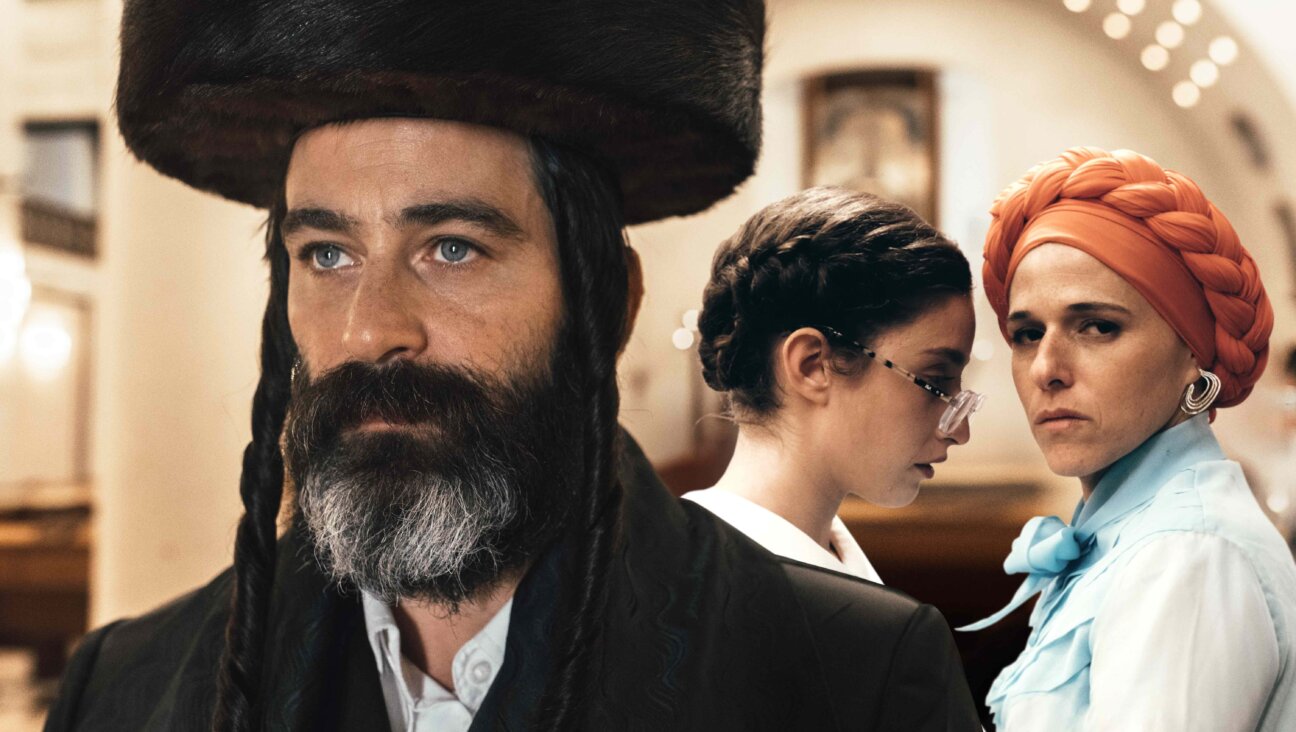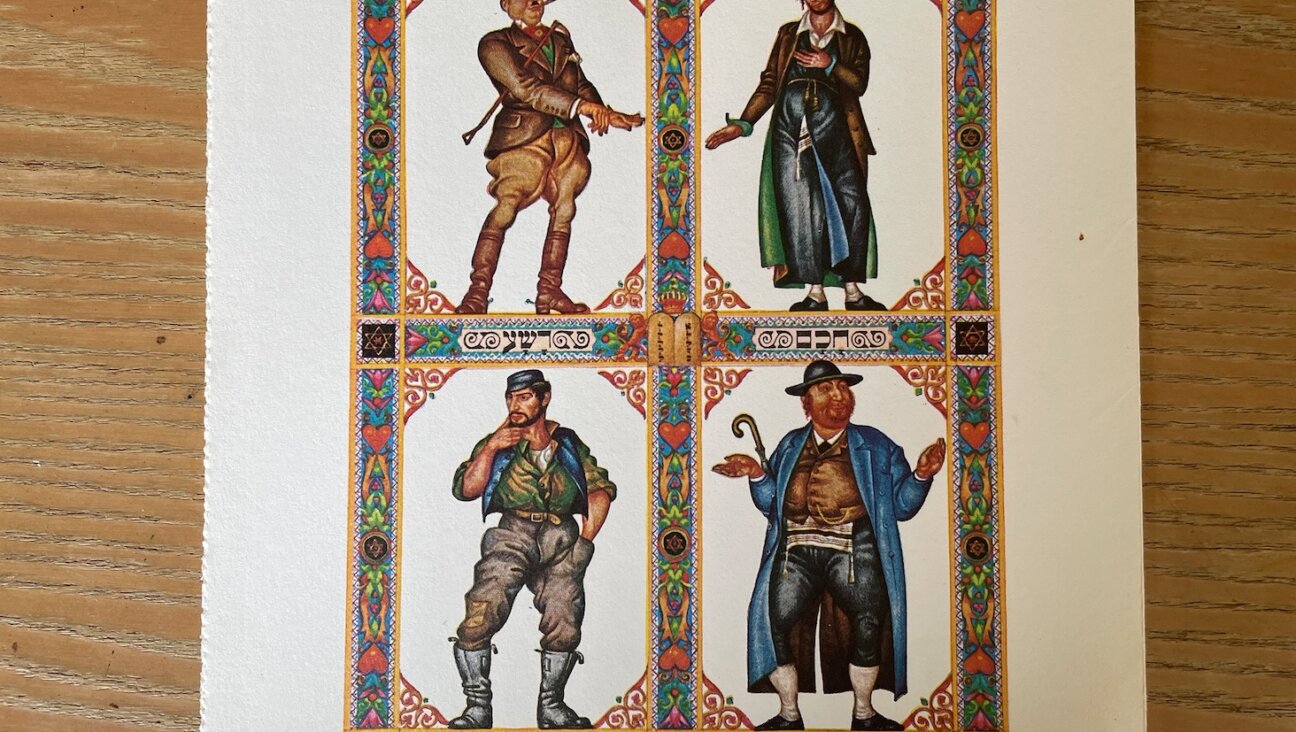HBO’s ‘My Brilliant Friend’ Feels A Little Fake — That’s What Makes It Faithful

Image by Anya Ulinich
While already lauded or rejected for its fidelity to the source material, HBO’s adaptation of Elena Ferrante’s “My Brilliant Friend” has also been derided for feeling a little phony.
In an otherwise glowing review in The New Yorker, Emily Nussbaum remarked that the show “has the polish of certain well-funded historical portraits of poverty.” Her colleague Troy Patterson agreed, calling it “a Prada ad for working-class gloom.” In a piece for the LA Times, Robert Lloyd noted that the early episodes’ cityscape “feels barren, artificial and dreamlike, like something out of Antonioni or Fellini.” But all three critics, and scores more, claimed that the series transported them, slick production or no.
Why is the show so alluringly artificial? Is it the unavoidable reproduction demanded by its period setting that makes it like aspartame for the eyes? Is it the sound-stage-constructed square where much of the central action plays out? Could it be the director Saverio Costanzo’s imposition of Italian Neo-Realist homage? Or does the show’s aesthetic lie in the fact that it is a memory piece, many years removed from its narrator’s youth?
The eight-episode series’ veneered presentation stems from all of these factors at once, and yet, the jump to television may not be at the root of it.
Minor plot spoilers for the book and TV series as well as Ferrante’s alleged identity follow.
A large part of the appeal of Elena Ferrante’s books comes from their curious capacity to gesture at the peculiar circumstances of mid-century Naples while saving space for a depth of feeling received as universally human. But maybe there was always a distance or stiltedness to the text.
Italian readers have noted that Ferrante’s prose can be clunky and inexact; some have trumpeted that Ann Goldstein’s superb English translation is superior. Of course, any translation, no matter how deft, feels translated. The awkward elegance of the prose for a non-Neapolitan is part of the exotic draw, as are the various brands of tourism the books provide (Slum, Italianate, Epochal, Academic).
Foreigners accept the work about the poorer classes in southern Italy as authentic, though the more contentious Italian response and the rumored authorship of the series by translator Anita Raja, the middle-class daughter of a Polish-Jewish Holocaust survivor and a Neapolitan magistrate father, leave room for doubt. This questionable authenticity is what makes the books good and makes the series, with its elevated production and swelling score, faithful.
The distance of translation, of not quite being of a world or understanding it fully, are ideal for the form of a memory novel, especially one concerning a friendship like Lenù and Lila’s, who from childhood on recall and process every hurt, setback and act of devotion to each other differently. The books, from the dissolving borders of Lila’s nervous breakdowns to Lenù’s idealizing of her crush, Nino, are about subjectivity and all its faults.
Throughout the later books the narrator, Lenù Greco, works on a novel about the old neighborhood in Naples. She is young when she starts it, having just emerged on the literary scene with her first book. She sends a manuscript to her mother-in-law, who doesn’t care for it and also to Lila, her closest friend. Lila hates the book and her harsh words about it cause a schism between the two.
It’s not immediately clear why Lila objects. Lila may believe the book to be pedestrian. Lila may also think that Lenù misunderstands the world they came from. She might think that Lenù has no business writing about their old world from her new place of status. In the end we’re led to believe, as turns out to be true, that the novel’s light fictionalization of real crimes might prove dangerous for those still living in their hometown. It’s implied that Lenù isn’t fully aware of the implications of the work. We can only guess as to Lila’s reasoning because we only have Lenù’s word to go on.
Much later, when Lenù feels pressure to meet a deadline, she finds the old manuscript and sends it to her publisher in Rome. The publisher, who is implied to have a bourgeois background, loves the book for its grit. When it’s released, the neighborhood in Naples rejects it, believing Lenù got their history wrong.
While this dynamic is mirrored in the ecstatic reception of Ferrante’s books abroad versus their occasional demotion to sentimental “women’s novels” in Italy, it also highlights Lenù’s own acknowledged shortcomings as a narrator removed from her roots and Lila’s inseparable connection to where they came from.
If the books and the show seem a little chintzy, unreal or too tidy it is because of Lenù’s perspective. Lenù’s guile as a narrator, writing decades in the future, comes from the things she missed or pretends to. Her brilliance is the brilliance of books. Lila’s lies in street smarts that are only glimpsed in a sidelong way.
In a December 11 piece in The Times, book critic Parul Sehgal took issue with the glossy presentation of the HBO adaptation in these terms.
“To me, the Neapolitan novels are a Lila. They’re claustrophobic, scary and ambiguous,” Sehgal said. “The television show is a Lenù. It’s very pretty and wants to be pleasing. Even the violence feels stylized. It leaves out so much of what gives the book its allure — how Ferrante depicts emotions and desires that are conflicted and competing and don’t really have a name.”
But the truth is that both the inarticulate ambivalence and the stylization belong to Lenù and her memory — a trademark of her writing. Lenù’s impressions, if not her hard-to-film conflicting emotions, are the vantage the show takes by keeping her as a narrator. As to Lila’s contribution to the literary canon, something Lenù anticipates in the last book for its expected precision and confidence, we can defer to the show finale’s most telling moment.
In the scene Lenù lets Lila edit an essay she wrote. She knows exactly what to do, what to move, what to elide to make the piece work better. This is the work of any editor, translator or adaptor. Series director Saverio Costanzo has performed this role for the novels with Ferrante’s blessing and occasional input over email.
By keeping the narrative neat and the cinematography beautiful he is in fact achieving the fusion of Lila’s innate understanding and Lenù’s romantic recall. Together they couldn’t be truer to the books’ spirit.
PJ Grisar is the Forward’s culture intern. He can be reached at [email protected].

I hope you appreciated this article. Before you go, I’d like to ask you to please support the Forward’s award-winning journalism this Passover.
In this age of misinformation, our work is needed like never before. We report on the news that matters most to American Jews, driven by truth, not ideology.
At a time when newsrooms are closing or cutting back, the Forward has removed its paywall. That means for the first time in our 126-year history, Forward journalism is free to everyone, everywhere. With an ongoing war, rising antisemitism, and a flood of disinformation that may affect the upcoming election, we believe that free and open access to Jewish journalism is imperative.
Readers like you make it all possible. Right now, we’re in the middle of our Passover Pledge Drive and we still need 300 people to step up and make a gift to sustain our trustworthy, independent journalism.
Make a gift of any size and become a Forward member today. You’ll support our mission to tell the American Jewish story fully and fairly.
— Rachel Fishman Feddersen, Publisher and CEO
Join our mission to tell the Jewish story fully and fairly.
Only 300 more gifts needed by April 30

























